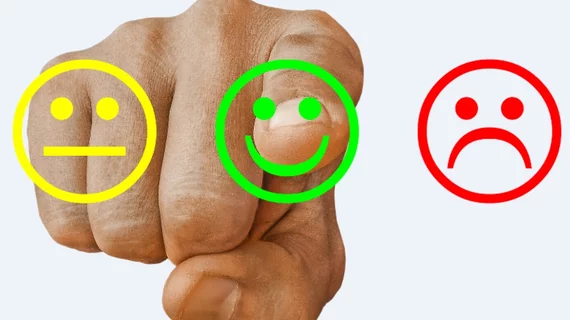Nishan Shetty, MS, never anticipated what would happen after he offered to cover for a patient experience administrator taking a trip to Thailand, he said Monday during a session at SIIM’s Annual Meeting.
“I did not know what I was getting myself into,” said Shetty, a data scientist at SMIL Southwest Medical Imaging, which provides interventional radiology and diagnostic services at 14 outpatient centers across the Phoenix area.
After taking notes on each laborious step required to send out surveys, Shetty looked at his monitor covered in Post-it notes and thought to himself: “There must be a more efficient way of doing this.”
That’s when he started gathering survey information and used his data scientist experience to develop a deep neural network to analyze patient experience surveys. Before this, the administrator would manually read and compile all comments before sending them to site and modality managers.
The tool, known as SentPro, was trained on more than 10,000 surveys gathered from SMIL’s 14 centers. A sentence is put into the platform and, after going through multiple layers, is ultimately classified as a positive or negative review.
After testing, SentPro notched an accuracy of 93% and specificity of 94%. Essentially, Shetty explained, out of all the negative records in the dataset, it classified 94% correctly.
But it’s how the neural network has changed feedback lead times that’s been truly consequential, Shetty said during his virtual session. Before the tool, a survey sent out Monday couldn’t be read until the following Monday. That means an incident could have gone unaddressed for a full week, he noted.
“This is simply because there are too many surveys coming in during the week,” Shetty added. “And with so many steps to go through it was not feasible to process them daily.”
With survey collection, cleaning and processing now performed by SentPro, the team can read comments and address incidents the next day.
And aside from slashing turnaround times, there’s been plenty of positive anecdotal evidence as well.
While mistakes and oversights can occur anywhere, designing a robust complaint and feedback mechanism significantly mitigates the consequences, the data scientist said Monday.
“I built this model just to make my life easier and to make the workflow easier, but I ended up improving patient experience in a way that I didn’t anticipate.”
Going forward, Shetty hopes to further classify reports, including reasons behind negative surveys such as wait times, scheduling conflicts, or front desk problems.

